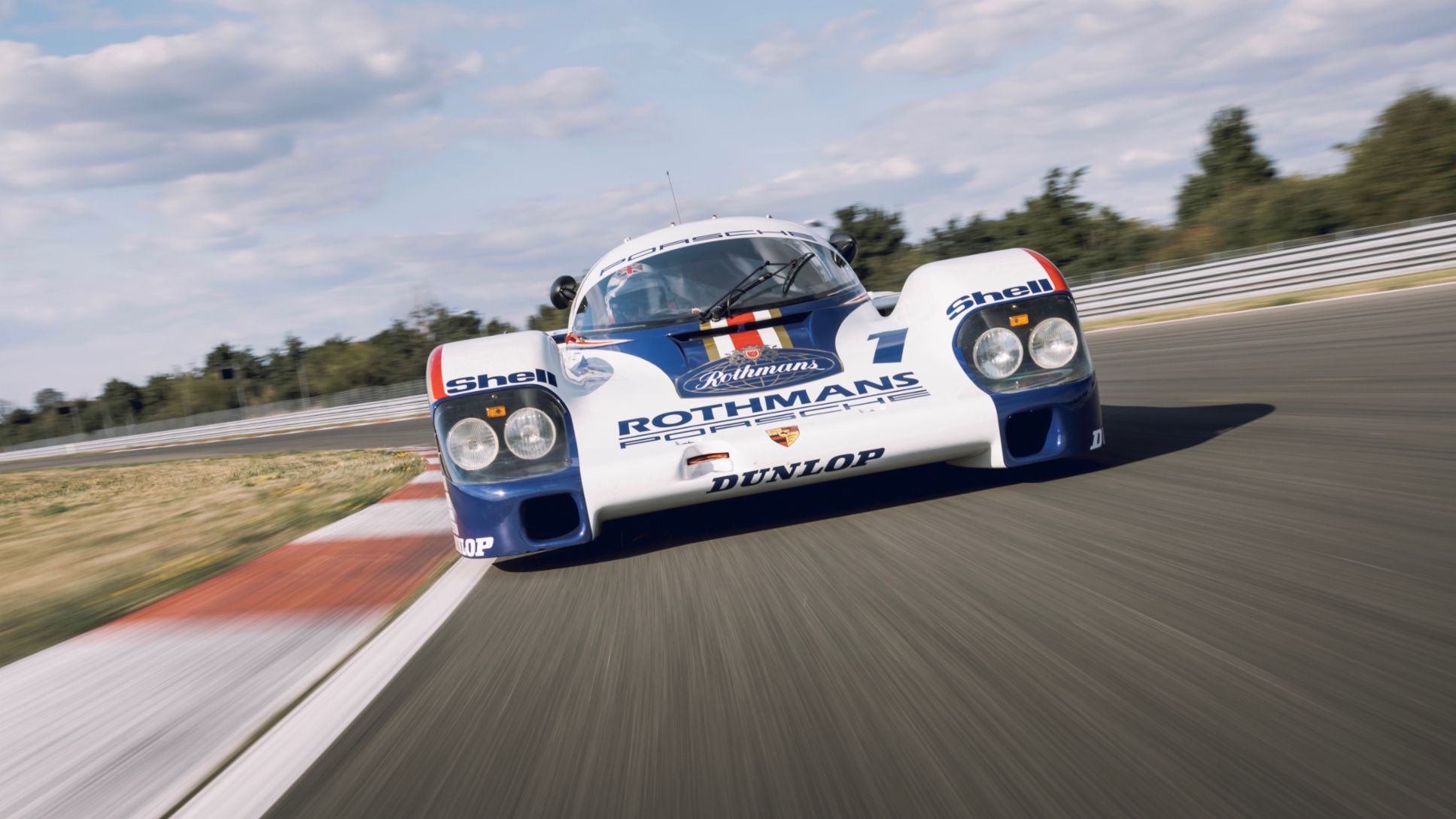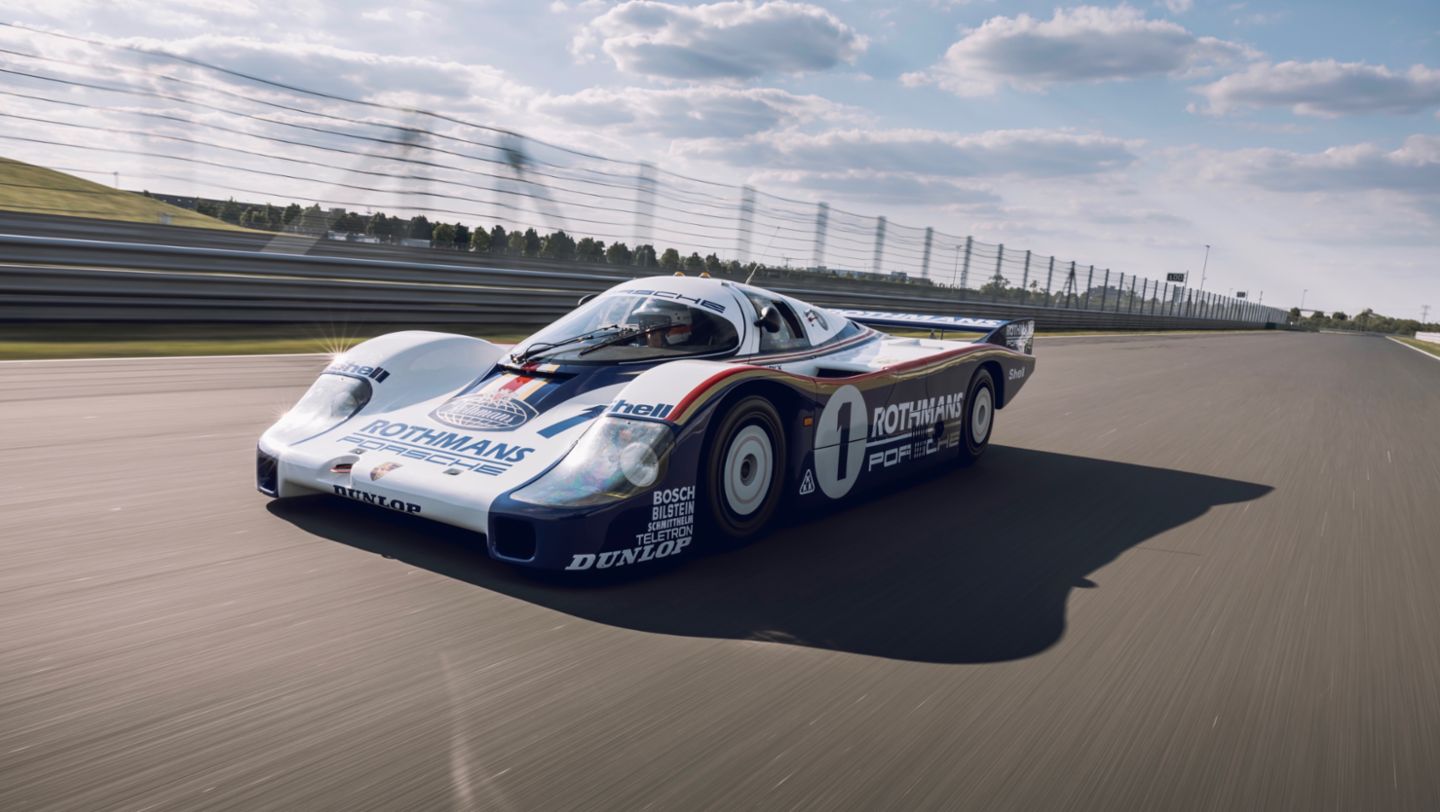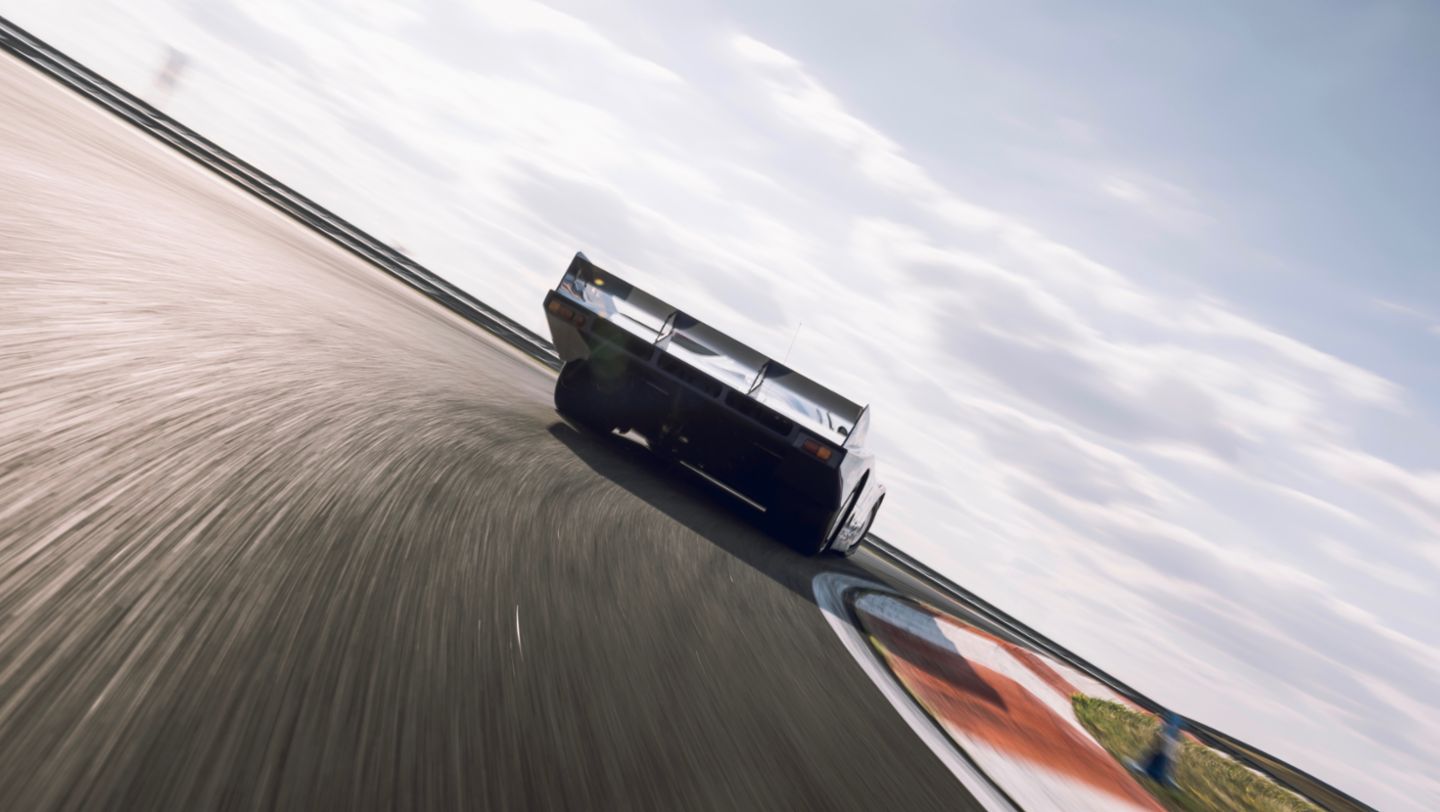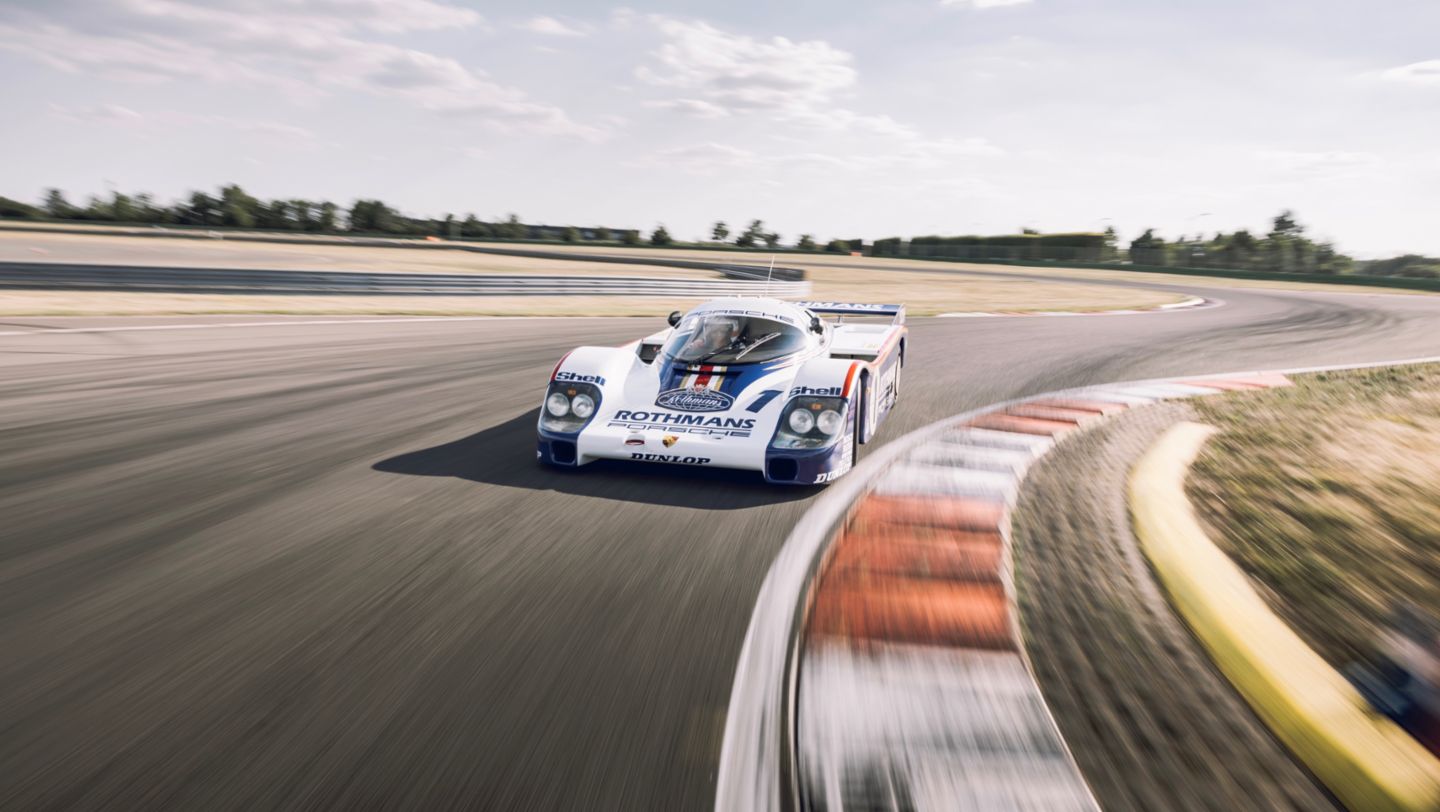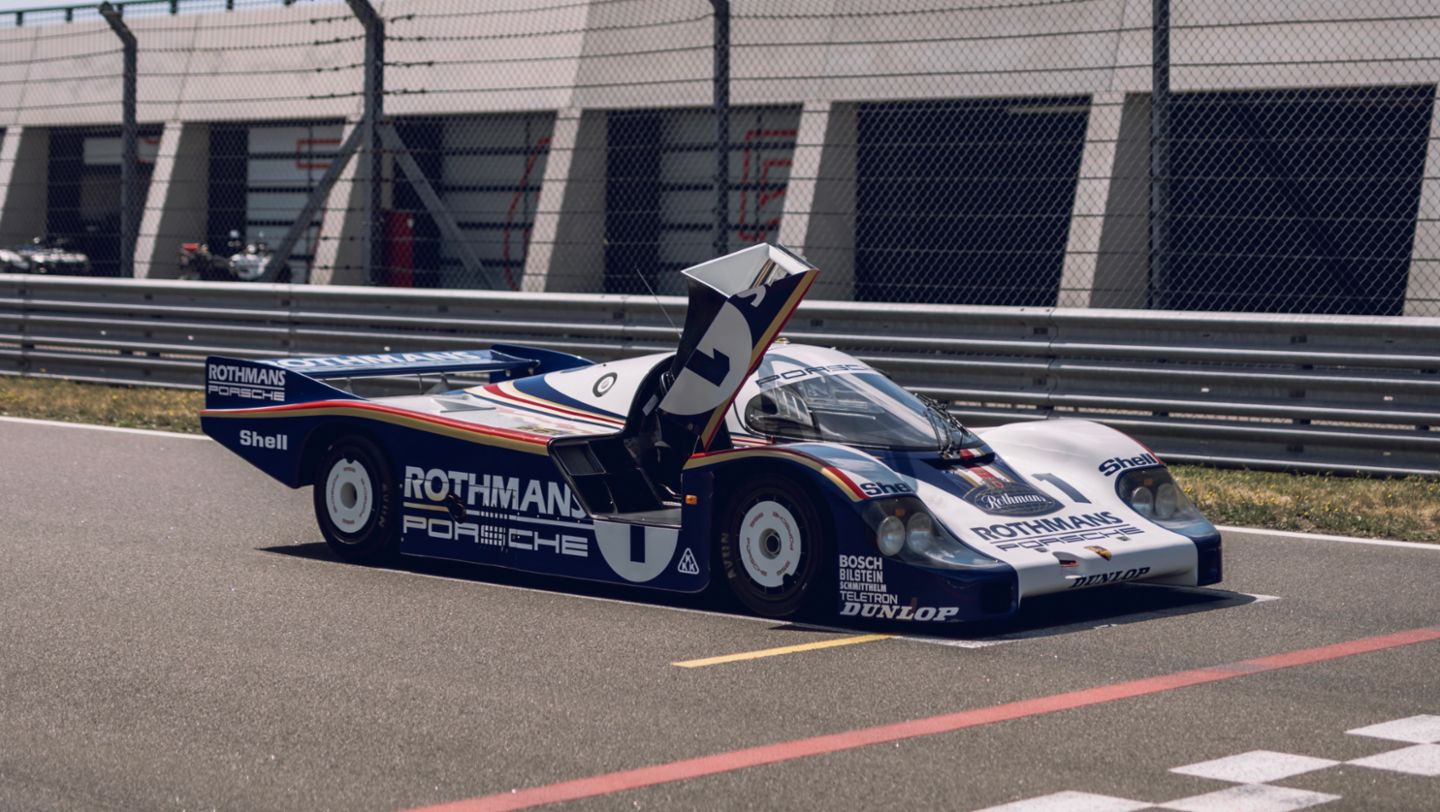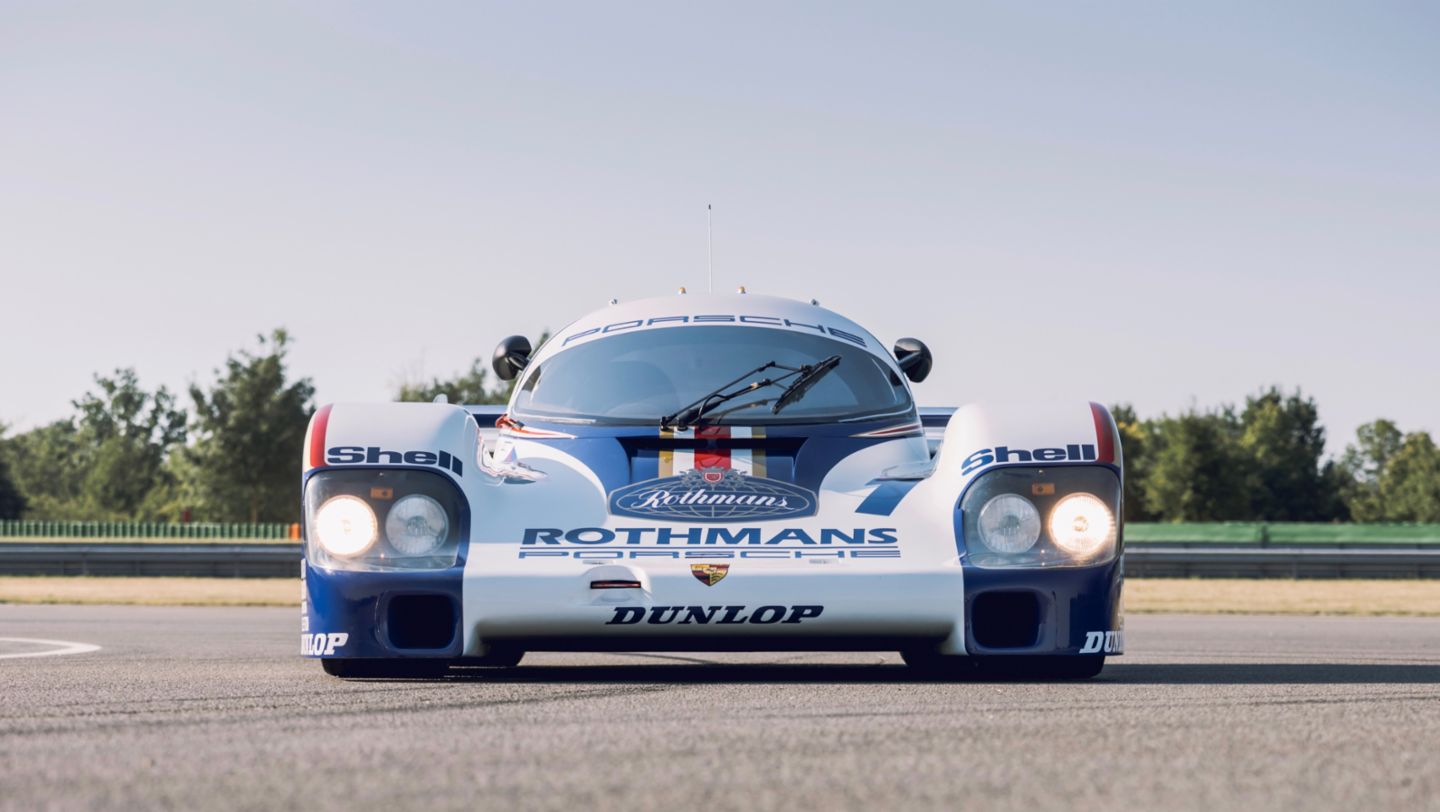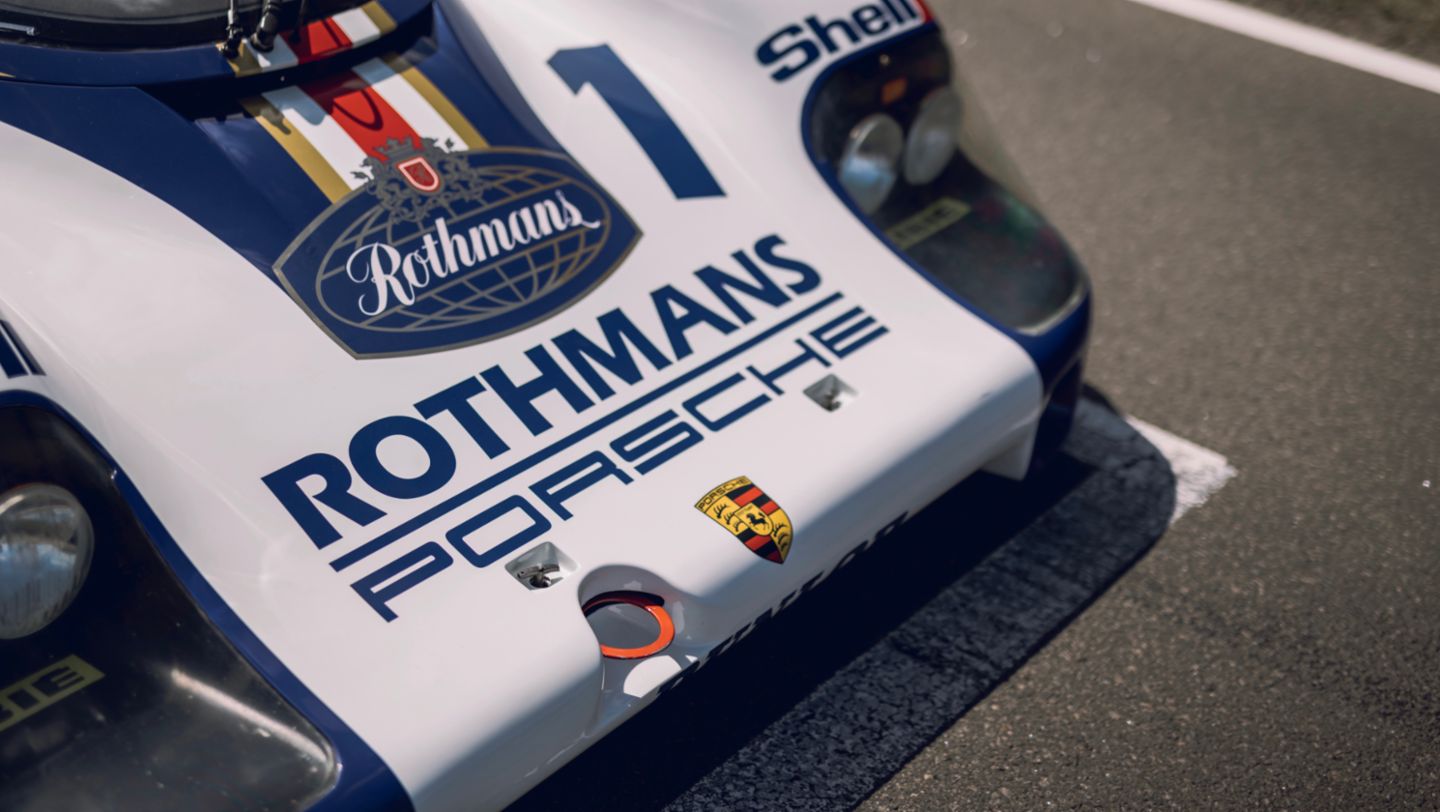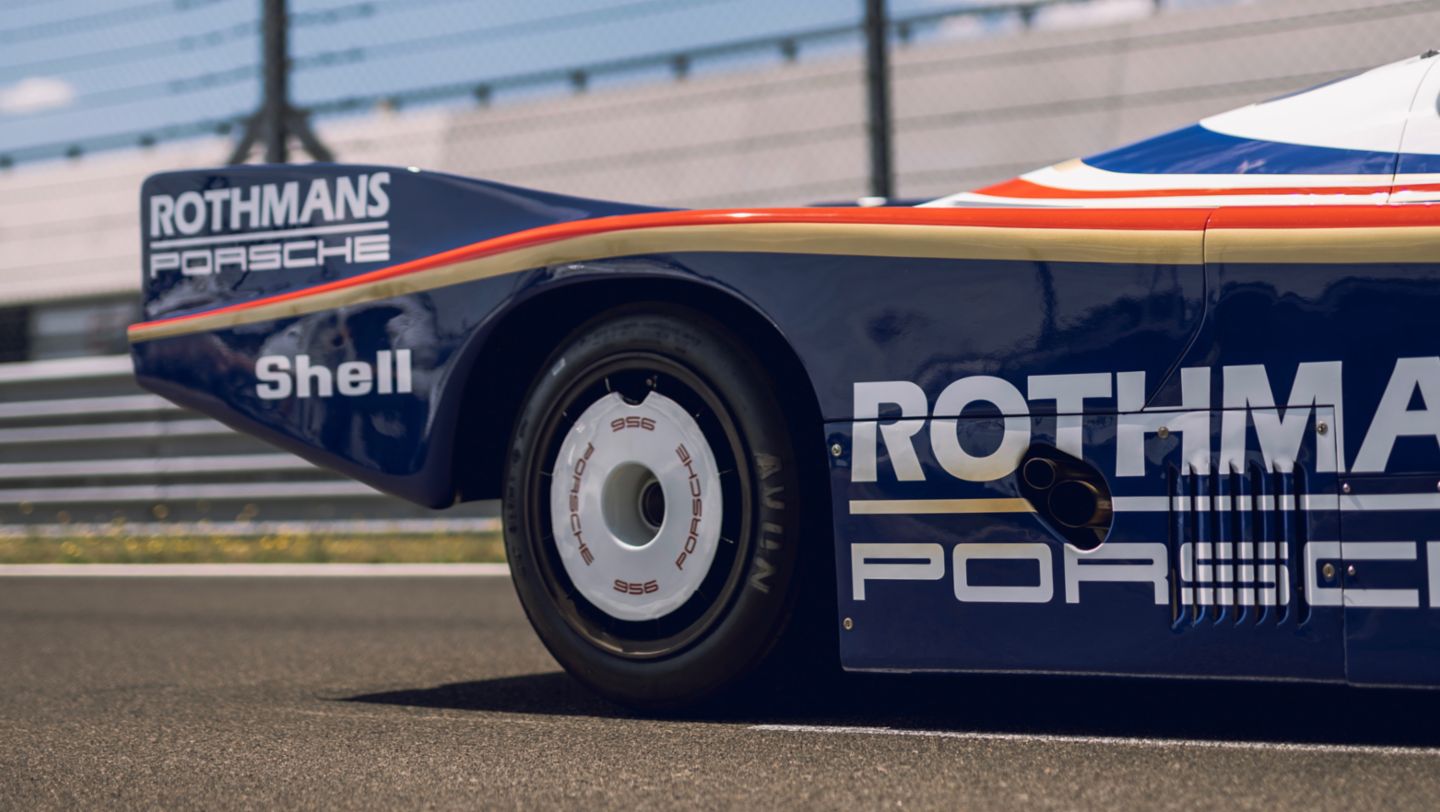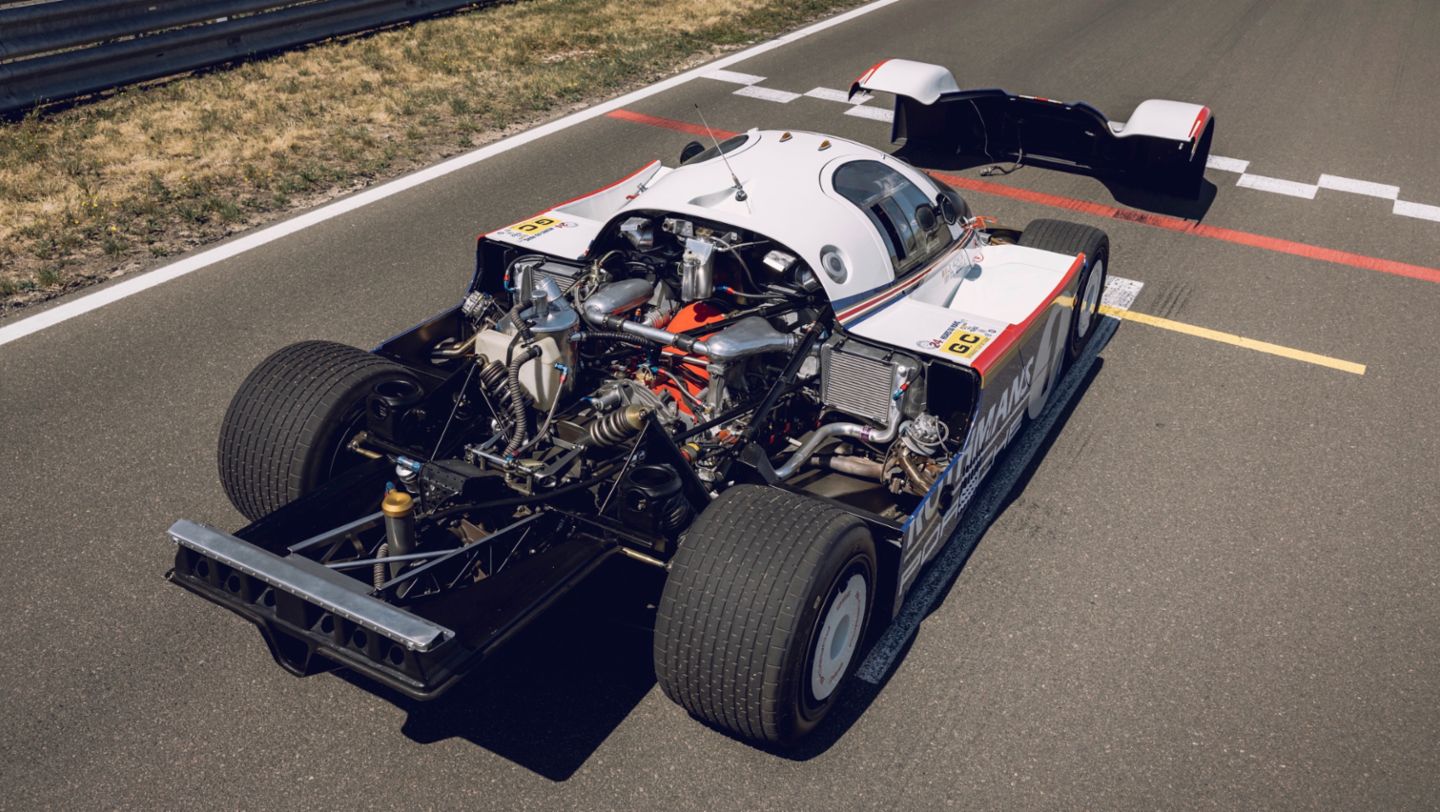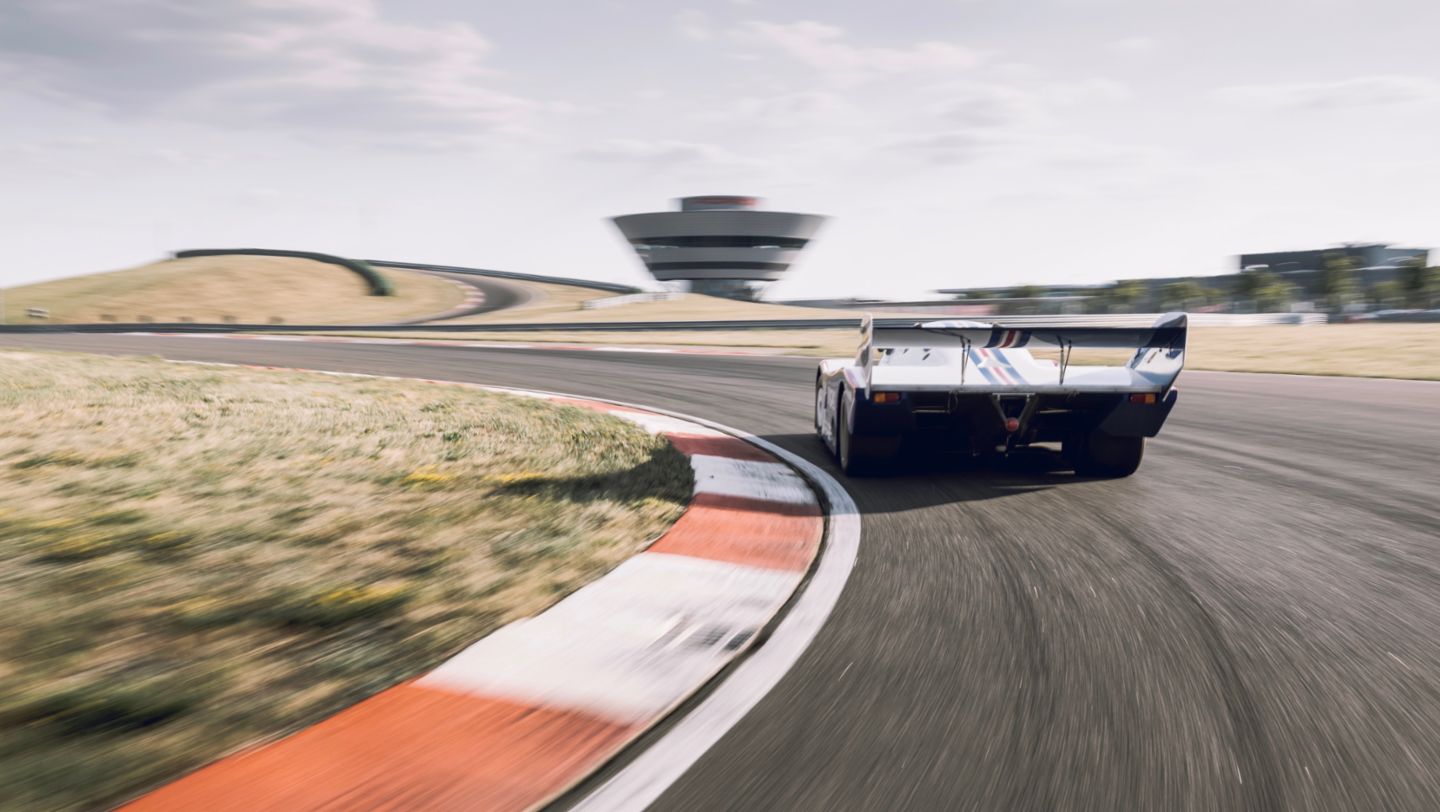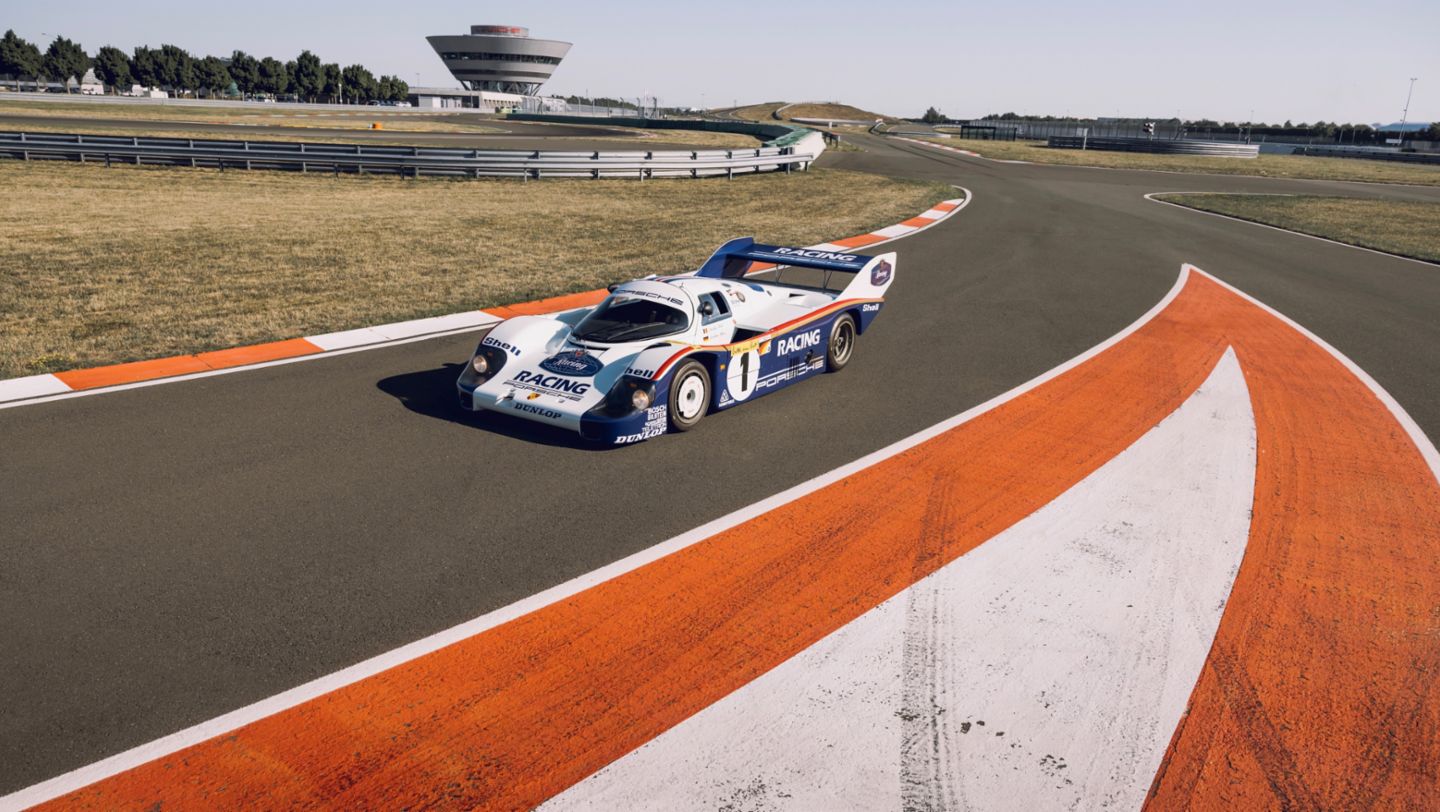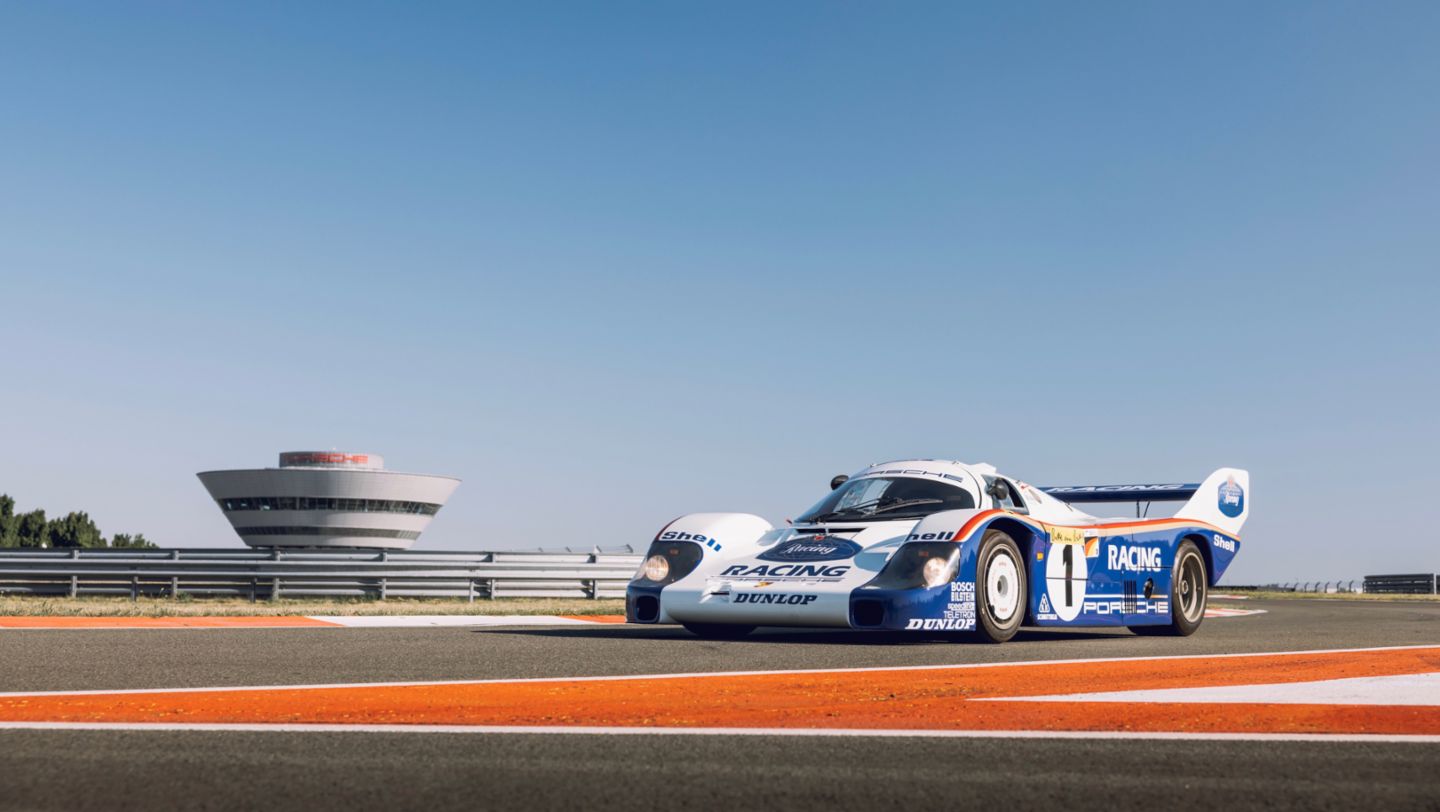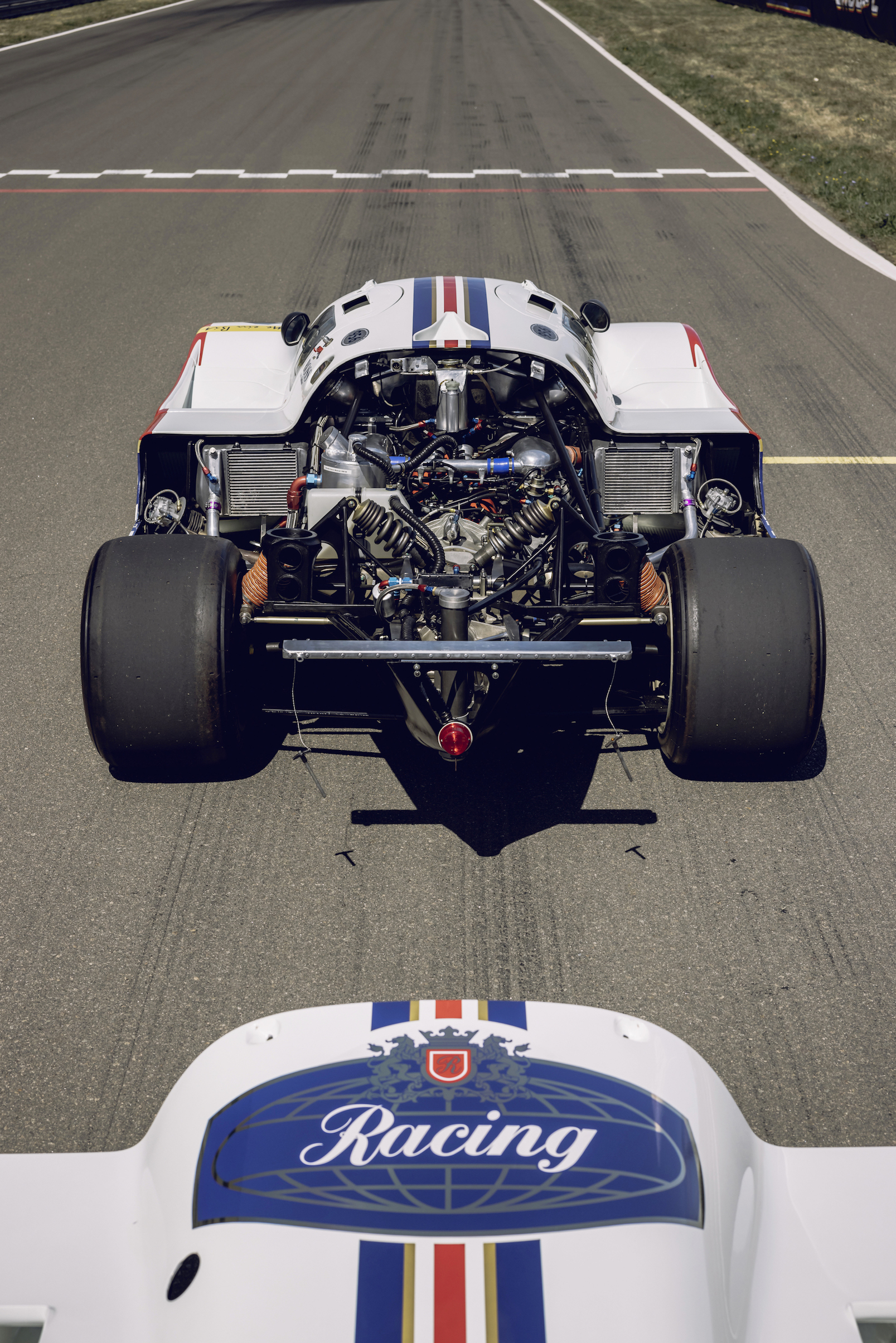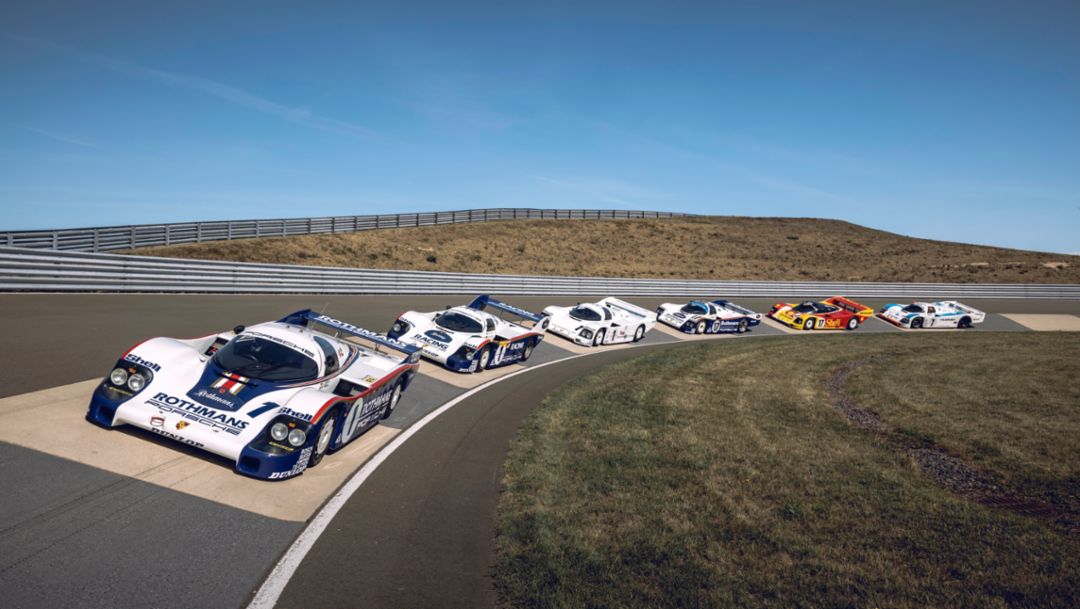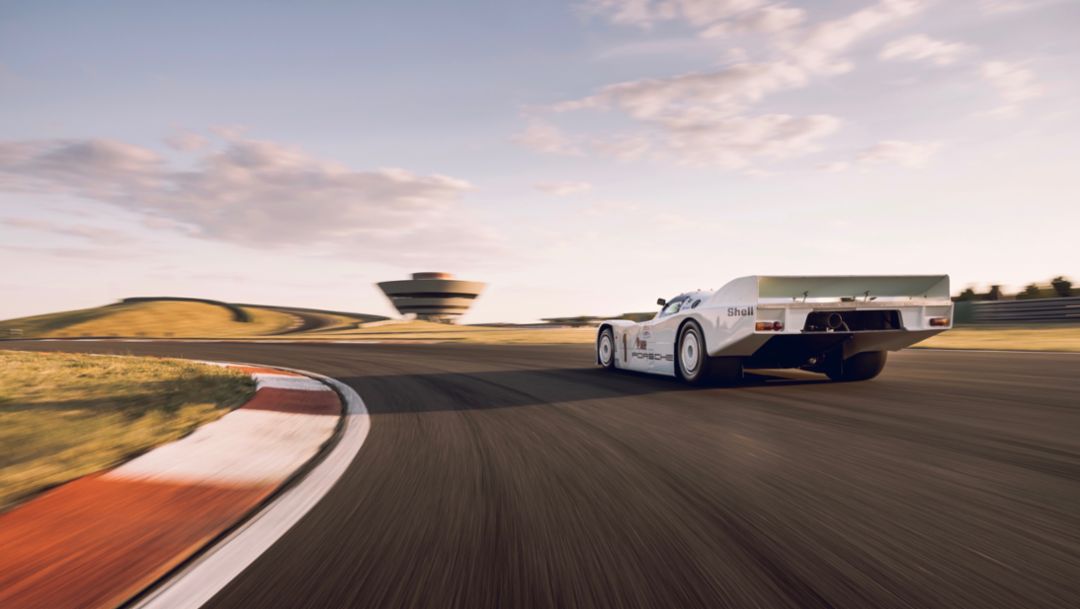In January 1982, Derek Bell experienced the new racing car at Le Castellet. He recalled the day: “It was fantastic, the car was perfect. It was incredibly fast in the corners and was very stable.” Jochen Mass was also among the first drivers; he too remembers being blown away by the 956. “It was so different to all the other racing cars before it,” he said. “It had so much more downforce and was efficient in every detail. With the 956, so many corners just weren’t there any more. The car was so good that it was now possible to drive them at full throttle. It was also very comfortable to drive, not least on longer runs, because the seats were cushioned and you sat well in them.”
Board Member for Development Helmuth Bott, of all people, was among the few sceptics. He could not imagine that a 620 PS racing car would be faster than its predecessor, the 917, which had 1,000 PS at its disposal. To ensure Singer couldn’t put one past him, Bott personally chose the driver for a comparison, entrusting the task to independent driver Bell. Singer chuckles: “Ultimately the 956 was two seconds faster. Bott was satisfied and even climbed into the racing car himself to get a feel for it.” At Le Mans, however, it was Derek Bell and Jacky Ickx who won the 1982 race in the 956. Jochen Mass and Vern Schuppan took second and Hurley Haywood, Al Holbert and Jürgen Barth came third in their 956. In the end, the racing cars crossed the line in the order of their race numbers: 1, 2 and 3. The Porsche 956 proved its capability in Group C in its very first season back in 1982.
Saving fuel as an adventure
Saving petrol was a key concern from the outset. “For the first time, there was a very clear fuel consumption rule for endurance races,” explains Singer. “You could have a maximum of 100 litres on board and you had to do five pit stops. A maximum of 600 litres were allowed for the entire race distance. But you could never drive the cars down to empty – the danger of getting stuck out there somewhere was too great. It did nevertheless happen on occasion that someone would run out of fuel with two laps to go and would have to wait on the side of the track until they could get filled up there.”
Saving fuel was also a dangerous undertaking, however, as Bell recalls: “We had to tape a piece of paper, about five by seven centimetres, to the centre of the steering wheel. At the top it said: 11, 12, 13. On the side it had the numbers 1 to 13. On the instrument panel there was an indicator or how much fuel we had used at a certain point. So we went out for 11, 12 or 13 laps. If we did 11 laps with the fuel, we were really fast. But that also meant more fuel stops. Every pit stop meant three to four minutes of lost time. We could do 13 laps – very economically, but also very boringly for everyone involved.” The calculating was one thing; but the reading was another thing altogether. “We were doing 360 km/h on the Mulsanne Straight and at the same time we had to look at this little piece of paper and figure out how many laps we’d set out to do. Believe me, we had a tough job in those cars.
German driver Hans-Joachim Stuck joined the Porsche team in 1985: “I drove in a team with Derek. I could rely on him one hundred per cent. We never had an internal rivalry. Sometimes he was faster, sometimes I was. Peter Falk had taught us how we could save extra fuel at Le Mans, for example while braking after the very long Mulsanne Straight. Normally we braked 200 metres before it but were now supposed to ease off the accelerator 400 metres before it and just let the car roll. There were about 10 more corners, so we did it the same way there. This made the distance travelled with the accelerator floored considerably less. What a brilliant idea – that’s how we beat them all.”
Unusual ideas
The team also had some unusual ideas that helped solve the fuel problem: because the fuel at the respective race tracks was completely inconsistent at the time, the teams never knew how they should tune their engines. Helmut Schmid, an engine man at the time, remembers it well: “We got the notion of using Norbert Singer’s company car, the 944 Turbo. We installed a measuring device and then compared conventional petrol with that at the track. Maximum rpms, full on brakes till everything was glowing. That's how we got to the knock limit of the engine. And that gave us an advantage because then we knew how to tune the engines in terms of ignition, injection parameters and so on. Later we piggybacked the knock control from the 944 on the steering apparatus in the 962.” Singer sums things up: “A comparison in Spa in 1982 and 1985 shows that the average lap time over the entire race in that period got seven per cent faster while fuel consumption dropped by 23 per cent.”
